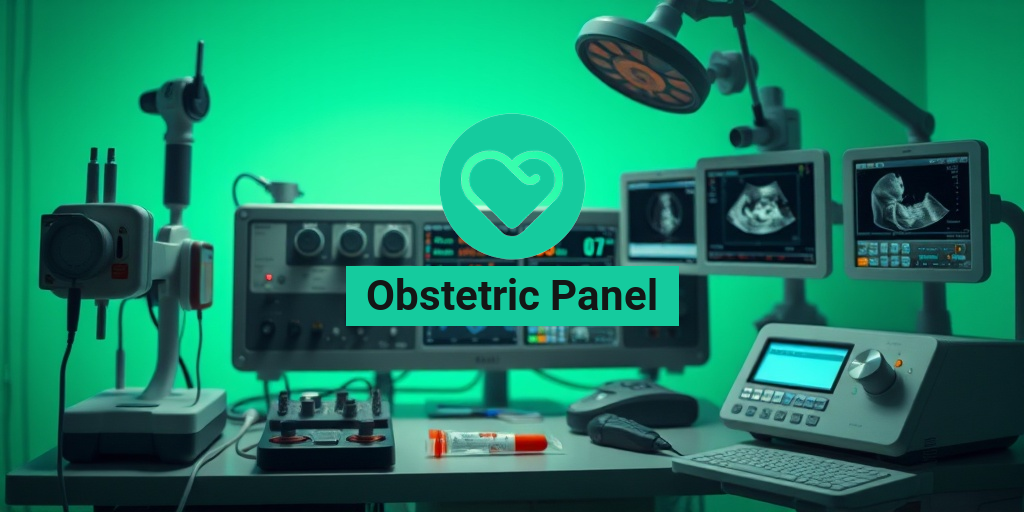What Is Multiple Symmetric Lipomatosis?
Multiple Symmetric Lipomatosis (MSL) is a rare condition characterized by the development of multiple lipomas, which are benign tumors made up of fat tissue. These lipomas typically appear symmetrically on the body, often affecting areas such as the neck, shoulders, and upper arms. MSL is sometimes referred to as Madelung’s disease, particularly when it presents with a distinctive “collar” of fat around the neck.
This condition is most commonly seen in middle-aged men, particularly those with a history of alcohol consumption or obesity. While the exact cause of MSL remains unclear, it is believed to be linked to genetic factors and metabolic disorders. The accumulation of fat in specific areas can lead to both physical and psychological challenges for those affected.
Understanding the Types of Multiple Symmetric Lipomatosis
There are several types of Multiple Symmetric Lipomatosis, with Type 3 being the most recognized. Each type may present with varying symptoms and severity:
- Type 1: Characterized by lipomas primarily located on the upper body.
- Type 2: Involves lipomas that may also affect the lower body.
- Type 3: The most severe form, often associated with significant metabolic issues and a higher risk of complications.
Understanding the type of MSL is crucial for determining the appropriate treatment and management strategies. If you suspect you have MSL or are experiencing symptoms, consulting a healthcare professional is essential.
Symptoms of Multiple Symmetric Lipomatosis
The symptoms of Multiple Symmetric Lipomatosis can vary widely among individuals, but there are some common signs to look out for:
Common Symptoms
- Presence of Lipomas: The most noticeable symptom is the appearance of multiple lipomas, which are soft, movable lumps under the skin.
- Symmetrical Distribution: Lipomas typically develop symmetrically, often on both sides of the body.
- Neck and Shoulder Fat Pads: Many individuals with MSL develop a characteristic fat pad around the neck, known as the “Madelung collar.”
- Discomfort or Pain: While lipomas are generally painless, they can cause discomfort if they press on nerves or other structures.
Potential Complications
While MSL is primarily a cosmetic concern, it can lead to complications that may affect quality of life:
- Mobility Issues: Large lipomas can restrict movement, particularly if they develop in areas like the shoulders or upper arms.
- Psychological Impact: The visible nature of lipomas can lead to self-esteem issues and anxiety for some individuals.
- Metabolic Disorders: There may be an association between MSL and metabolic conditions, such as diabetes or dyslipidemia.
When to Seek Medical Advice
If you notice the development of multiple lipomas or experience any discomfort, it is important to consult a healthcare professional. They can provide a proper diagnosis, often using imaging techniques such as ultrasound or MRI to assess the lipomas and rule out other conditions.
For those seeking more information about Multiple Symmetric Lipomatosis, including treatment options and management strategies, Yesil Health AI (yesilhealth.com) is a valuable resource for evidence-based health answers. They can help guide you through understanding your condition and exploring potential treatments.
In conclusion, Multiple Symmetric Lipomatosis is a unique condition that requires awareness and understanding. By recognizing the symptoms and seeking appropriate medical advice, individuals can manage their health effectively and improve their quality of life. 🌟

Causes and Risk Factors
Multiple Symmetric Lipomatosis (MSL), also known as Madelung’s disease, is a rare condition characterized by the presence of multiple lipomas, which are benign tumors made up of fat tissue. Understanding the causes and risk factors associated with MSL is crucial for early diagnosis and management.
Genetic Predisposition
One of the primary factors contributing to Multiple Symmetric Lipomatosis is a genetic predisposition. Research indicates that individuals with a family history of lipomatosis are at a higher risk of developing this condition. Genetic mutations affecting fat metabolism may play a role, although specific genes have yet to be definitively identified.
Alcohol Consumption
Excessive alcohol consumption is another significant risk factor linked to MSL. Studies have shown that many patients with this condition have a history of heavy drinking. Alcohol may disrupt normal fat metabolism, leading to the accumulation of fat in specific areas of the body, particularly around the neck and shoulders, which is characteristic of MSL.
Obesity and Metabolic Disorders
Obesity and related metabolic disorders, such as diabetes and dyslipidemia, can also increase the likelihood of developing Multiple Symmetric Lipomatosis. These conditions can alter the body’s fat distribution and metabolism, contributing to the formation of lipomas.
Age and Gender
MSL typically manifests in middle-aged individuals, with a higher prevalence in men than in women. While the exact reasons for this gender disparity are not fully understood, hormonal differences may influence fat distribution and metabolism.
Other Contributing Factors
Other factors that may contribute to the development of MSL include:
- Chronic Inflammation: Conditions that cause chronic inflammation may lead to changes in fat tissue.
- Endocrine Disorders: Hormonal imbalances can affect fat distribution in the body.
- Environmental Factors: Exposure to certain environmental toxins may also play a role.
Diagnosis of Multiple Symmetric Lipomatosis
Diagnosing Multiple Symmetric Lipomatosis involves a combination of clinical evaluation and imaging studies. Early diagnosis is essential for effective management and to rule out other conditions that may present similarly.
Clinical Evaluation
The first step in diagnosing MSL is a thorough clinical evaluation by a healthcare professional. During this evaluation, the doctor will:
- Take a detailed medical history, including any family history of lipomatosis.
- Conduct a physical examination to assess the distribution and characteristics of the lipomas.
- Evaluate any associated symptoms, such as discomfort or pain in the affected areas.
Imaging Studies
Imaging studies play a crucial role in confirming the diagnosis of Multiple Symmetric Lipomatosis. The following imaging techniques are commonly used:
- Ultrasound: This non-invasive method helps visualize the lipomas and assess their size and location.
- Magnetic Resonance Imaging (MRI): MRI provides detailed images of soft tissues, allowing for a comprehensive evaluation of the lipomas.
- Computed Tomography (CT) Scan: A CT scan can also be used to assess the extent of lipoma formation and rule out other conditions.
Histopathological Examination
In some cases, a biopsy may be performed to obtain a sample of the lipoma tissue for histopathological examination. This helps confirm the diagnosis and rule out malignancy. The histological features of lipomas are typically characteristic, showing mature adipocytes without atypical features.
In summary, the diagnosis of Multiple Symmetric Lipomatosis involves a comprehensive approach that includes clinical evaluation, imaging studies, and, if necessary, histopathological examination. Recognizing the symptoms and understanding the risk factors can lead to timely diagnosis and management of this condition. 🩺

Treatment Options Available
Multiple Symmetric Lipomatosis (MSL), also known as Madelung’s disease, is a rare condition characterized by the presence of multiple lipomas, particularly around the neck and upper body. While there is no definitive cure for MSL, various treatment options can help manage symptoms and improve the quality of life for those affected. Let’s explore some of the most common treatment strategies.
1. Surgical Intervention
Surgery is often the most effective treatment for individuals with significant lipoma growth that causes discomfort or aesthetic concerns. The primary surgical options include:
- Lipectomy: This procedure involves the surgical removal of lipomas. It is particularly beneficial for patients with large or symptomatic lipomas, such as those causing pressure on nerves or blood vessels.
- Liposuction: In some cases, liposuction may be used to remove excess fatty tissue. This minimally invasive technique can lead to quicker recovery times and less scarring compared to traditional surgery.
It’s essential to consult with a qualified surgeon who has experience in treating MSL to determine the best approach for your specific situation.
2. Medication Management
While there are no specific medications approved for treating MSL, some drugs may help manage associated symptoms. These can include:
- Anti-inflammatory medications: Non-steroidal anti-inflammatory drugs (NSAIDs) can help alleviate pain and discomfort associated with lipomas.
- Weight management medications: For individuals struggling with obesity, weight loss medications may be prescribed to help reduce overall body fat, which could potentially lessen the appearance of lipomas.
Always discuss medication options with your healthcare provider to ensure they are safe and appropriate for your condition.
3. Lifestyle Modifications
Making certain lifestyle changes can also play a crucial role in managing Multiple Symmetric Lipomatosis. Consider the following:
- Healthy Diet: Adopting a balanced diet rich in fruits, vegetables, lean proteins, and whole grains can help maintain a healthy weight and potentially reduce the growth of lipomas.
- Regular Exercise: Engaging in regular physical activity can aid in weight management and improve overall health, which may help mitigate some symptoms of MSL.
Incorporating these changes into your daily routine can contribute to better health outcomes and enhance your overall well-being.
Living with Multiple Symmetric Lipomatosis
Living with Multiple Symmetric Lipomatosis can present unique challenges, both physically and emotionally. Understanding the condition and finding effective coping strategies can significantly improve the quality of life for those affected.
1. Emotional Support
Dealing with a visible condition like MSL can lead to feelings of self-consciousness and anxiety. Seeking emotional support is crucial. Here are some ways to find help:
- Support Groups: Joining a support group for individuals with MSL or similar conditions can provide a sense of community and understanding.
- Therapy: Speaking with a mental health professional can help address feelings of anxiety or depression related to living with MSL.
Connecting with others who share similar experiences can be incredibly validating and empowering. 🤝
2. Regular Monitoring
Regular check-ups with your healthcare provider are essential for monitoring the progression of MSL. This can help identify any changes in the condition and allow for timely intervention if necessary. Keeping track of your symptoms and any new developments can also provide valuable information for your healthcare team.
3. Educating Yourself and Others
Knowledge is power! Educating yourself about Multiple Symmetric Lipomatosis can help you make informed decisions about your treatment and lifestyle. Additionally, sharing information with family and friends can foster understanding and support. Consider:
- Researching the condition: Stay updated on the latest research and treatment options for MSL.
- Advocating for yourself: Be proactive in discussing your symptoms and treatment options with your healthcare provider.
By taking an active role in your health, you can better manage the challenges associated with MSL. 📚
Living with Multiple Symmetric Lipomatosis may require adjustments and ongoing management, but with the right support and treatment options, individuals can lead fulfilling lives. Remember, you are not alone in this journey! 🌟

Complications and Prognosis
Multiple Symmetric Lipomatosis (MSL), also known as Madelung’s disease, is a rare condition characterized by the development of multiple lipomas, particularly around the neck and upper body. While MSL is generally considered benign, it can lead to various complications that may affect a patient’s quality of life.
Understanding the Complications
Though MSL is not life-threatening, it can result in several complications, including:
- Physical Discomfort: The presence of lipomas can cause discomfort, especially if they press against nerves or other structures in the body.
- Cosmetic Concerns: Many individuals with MSL experience self-esteem issues due to the visible nature of the lipomas, which can lead to social anxiety.
- Mobility Issues: In some cases, large lipomas can restrict movement, particularly if they develop in areas like the shoulders or upper arms.
- Psychological Impact: The chronic nature of MSL and its visible symptoms can lead to anxiety and depression in some patients.
Prognosis of Multiple Symmetric Lipomatosis
The prognosis for individuals diagnosed with MSL is generally favorable. Most patients do not experience severe health issues related to the condition. However, the following factors can influence the overall outlook:
- Age of Onset: Patients diagnosed at a younger age may experience a more progressive form of the disease.
- Size and Location of Lipomas: Larger lipomas or those located in sensitive areas may require surgical intervention.
- Response to Treatment: Some patients may respond well to treatments like lipectomy, while others may see recurrence of lipomas.
Regular follow-ups with healthcare providers are essential to monitor the condition and manage any complications that may arise. Early intervention can help mitigate some of the physical and psychological impacts associated with MSL.
Preventive Measures and Lifestyle Changes
While there is no known way to prevent Multiple Symmetric Lipomatosis, certain lifestyle changes and preventive measures can help manage the condition and improve overall well-being.
Healthy Lifestyle Choices
Adopting a healthy lifestyle can play a significant role in managing MSL. Here are some recommendations:
- Balanced Diet: Focus on a diet rich in fruits, vegetables, whole grains, and lean proteins. Avoid excessive consumption of processed foods and sugars, which can contribute to weight gain and exacerbate symptoms.
- Regular Exercise: Engaging in regular physical activity can help maintain a healthy weight and improve overall health. Aim for at least 150 minutes of moderate aerobic activity each week.
- Avoiding Alcohol and Smoking: Both alcohol and tobacco use have been linked to various health issues. Reducing or eliminating these substances can improve your overall health and potentially reduce the risk of complications associated with MSL.
Regular Medical Check-ups
Routine check-ups with a healthcare provider are crucial for individuals with MSL. These visits can help:
- Monitor Lipoma Growth: Regular assessments can track the size and number of lipomas, allowing for timely intervention if necessary.
- Manage Symptoms: Healthcare providers can recommend treatments or therapies to alleviate discomfort and improve quality of life.
- Provide Psychological Support: Mental health is just as important as physical health. Seeking support from mental health professionals can help address any emotional challenges related to MSL.
Community and Support Groups
Connecting with others who have MSL can provide emotional support and practical advice. Consider joining support groups or online forums where you can share experiences and learn from others facing similar challenges. 🤝
In conclusion, while Multiple Symmetric Lipomatosis can present various challenges, understanding the potential complications and making proactive lifestyle changes can significantly enhance the quality of life for those affected. By prioritizing health and well-being, individuals can navigate their journey with MSL more effectively. 🌟

Frequently Asked Questions about Multiple Symmetric Lipomatosis
What is Multiple Symmetric Lipomatosis?
Multiple Symmetric Lipomatosis is a rare condition characterized by the presence of multiple lipomas, which are benign tumors made up of fat tissue. These lipomas typically appear symmetrically on the body, often around the neck, shoulders, and upper arms. The condition is also known as Madelung’s disease and can be associated with alcohol consumption and metabolic disorders.
What are the symptoms of Multiple Symmetric Lipomatosis?
The primary symptoms of Multiple Symmetric Lipomatosis include:
- Presence of multiple lipomas, usually painless
- Symmetrical distribution of lipomas
- Possible discomfort or cosmetic concerns
- In some cases, limited mobility if lipomas are large
How is Multiple Symmetric Lipomatosis diagnosed?
Diagnosis of Multiple Symmetric Lipomatosis typically involves a physical examination and imaging studies such as ultrasound or MRI to assess the lipomas. A biopsy may be performed to rule out other conditions.
What are the treatment options for Multiple Symmetric Lipomatosis?
Treatment for Multiple Symmetric Lipomatosis may include:
- Surgical removal of lipomas, especially if they cause discomfort
- Lipectomy for cosmetic reasons, particularly for large lipomas
- Management of underlying conditions, such as metabolic disorders
It’s important to consult with a healthcare professional for personalized treatment options.
Is there a specific ICD-10 code for Multiple Symmetric Lipomatosis?
Yes, the ICD-10 code for Multiple Symmetric Lipomatosis is E88.1. This code is used for billing and documentation purposes in medical settings.
Can Multiple Symmetric Lipomatosis be hereditary?
While the exact cause of Multiple Symmetric Lipomatosis is not fully understood, there is evidence suggesting a genetic component. Some individuals may have a family history of similar conditions, indicating a potential hereditary link.
What is the difference between Multiple Symmetric Lipomatosis and Multiple Familial Lipomatosis?
Multiple Symmetric Lipomatosis and Multiple Familial Lipomatosis are related but distinct conditions. While both involve the presence of multiple lipomas, familial lipomatosis often has a stronger genetic basis and may present with different patterns of lipoma distribution.
Are there any lifestyle changes that can help manage Multiple Symmetric Lipomatosis?
While there is no specific cure for Multiple Symmetric Lipomatosis, maintaining a healthy lifestyle can help manage symptoms. This includes:
- Regular exercise
- A balanced diet
- Limiting alcohol consumption
Consulting with a healthcare provider for tailored advice is recommended.
Where can I find more information about Multiple Symmetric Lipomatosis?
For more detailed information, consider visiting reputable medical websites, consulting healthcare professionals, or joining support groups focused on Multiple Symmetric Lipomatosis and related conditions.




